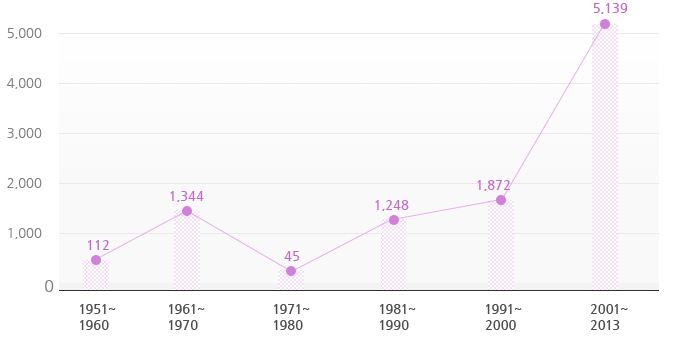
Recently, there is almost a three-fold increase in the number of returned relics, probably due to the increase in public awareness and interest. To further promote public interest, the Overseas Korean Cultural Heritage Foundation (OKCHF) held international academic conference about how to make use of overseas Korean cultural relics on Dec. 2013. It brought together experts in Korea and overseas to have an in-depth discussion about research and conservation of overseas relics. The publicalso participated to hear about what problem the relics meet. In addition, OKCHF supported a photo essay contest about overseas Korean relics and published about the situation of relics and their value to raise the interest of the public.
However, not all overseas relics are to be returned. There are two kinds of overseas relics: those that illegally flowed out or were stolen during military occupation and property that legally flowed out through purchase or donation. Of course, it is important to take back the illegally flowed relics, but it is also necessary to research property that legally flowed out.
Property is returned by donation, purchase, or negotiation. The former two methods are quite easy under voluntary attitude of donors or sellers, but the latter method can be very fussy. Negotiation takes a long time. If the owner refuses to return it, little can be done (even if it flowed out illegally). The Korean Buddhist painting mentioned above, for example, was returned after 100 years.
Fortunately, organizations willing to return relics are increasing. Unesco established international rules about that and a committee, Intergovernmental Committee for Promoting the Return of Cultural Property, to promote returning cultural property to homelands. Recently, entertainers also joined in promoting the return of Korean relics. It is good to see a tendency of property being restored to its rightful owner.
λ†ÄλûëξΕ¨λûê © μè§μï≠ξ≥Βκ¨Ä봆κ§Η ꧥ괮놳λû§ κΑè λû§κΑΑμè§ ξΗàλßÄ


